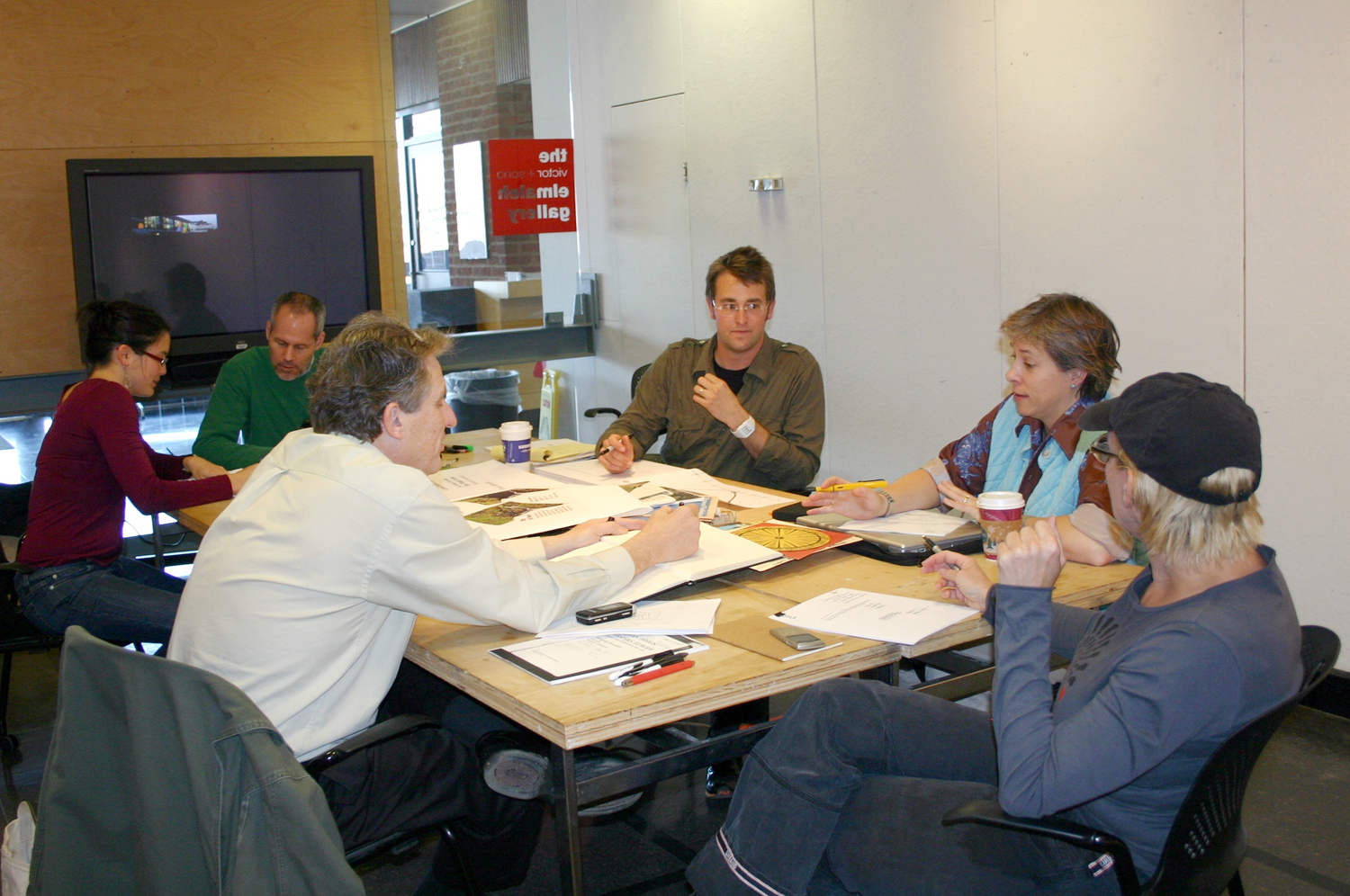January 15, 2008 — Several University of Virginia School of Architecture faculty members have collaborated to form GROW:DC, one of 24 finalist teams in the “City of the Future” design competition organized by the History Channel. The competition stipulates that teams select one of three cities (San Francisco, Atlanta or Washington) and imagine what it would look like in 100 years.
Eight finalists were selected for each city. The winner of each city competition will receive $10,000 and the opportunity to compete for the national title, which will be decided by a public online vote.
GROW:DC is a design collaborative and urban think tank led by assistant professors of architecture Jason Johnson and Nataly Gattegno. It also includes associate professor of landscape architecture Julie Bargmann and lecturer in landscape architecture Christopher Fannin, as well as William Morrish, the Elwood R. Quesada Professor of Architecture, Landscape Architecture and Urban and Environmental Planning. The team is consulted by associate professor and director of landscape architecture Kristina Hill and environmental engineer Byron Stigge of Buro Happold Engineers in New York.
The team’s proposal aims to gather together the diverse and fluctuating patches of the city: “Beyond the brilliant tyranny of its master plan, D.C. has to simultaneously grow at a finer street-by-street scale, while embracing the poetics of larger infrastructural systems and global networks," Johnson said.
"We envision the future of D.C. as a thriving ecology of multiple sites. These sites are already embedded in the messy urban, suburban, and coastal fabric of D.C. They provide a framework for interconnectivity and opportunity. They engage a series of ecologies and landscapes that could be industrious and working places, productive landscapes that could yield innovative, creative and cultural change.”
Competitors were given one week to assemble a three-dimensional design that is representative of their vision for the city. The finalists for D.C. will present their projects to the judges and the public at Washington's Union Station on Jan. 15 from 9 a.m. until 5 p.m. The public will be invited to cast online votes for a winner from among the juried finalists for each of the three cities.
For information, visit the History Channel's "City of the Future: A Design and Engineering Challenge" Web site at: www.history.com/minisites/cityofthefuture/ .
Visit GROW:DC's Web site (www.future-cities-lab.net/growdc) for information about their design solution.
Eight finalists were selected for each city. The winner of each city competition will receive $10,000 and the opportunity to compete for the national title, which will be decided by a public online vote.
GROW:DC is a design collaborative and urban think tank led by assistant professors of architecture Jason Johnson and Nataly Gattegno. It also includes associate professor of landscape architecture Julie Bargmann and lecturer in landscape architecture Christopher Fannin, as well as William Morrish, the Elwood R. Quesada Professor of Architecture, Landscape Architecture and Urban and Environmental Planning. The team is consulted by associate professor and director of landscape architecture Kristina Hill and environmental engineer Byron Stigge of Buro Happold Engineers in New York.
The team’s proposal aims to gather together the diverse and fluctuating patches of the city: “Beyond the brilliant tyranny of its master plan, D.C. has to simultaneously grow at a finer street-by-street scale, while embracing the poetics of larger infrastructural systems and global networks," Johnson said.
"We envision the future of D.C. as a thriving ecology of multiple sites. These sites are already embedded in the messy urban, suburban, and coastal fabric of D.C. They provide a framework for interconnectivity and opportunity. They engage a series of ecologies and landscapes that could be industrious and working places, productive landscapes that could yield innovative, creative and cultural change.”
Competitors were given one week to assemble a three-dimensional design that is representative of their vision for the city. The finalists for D.C. will present their projects to the judges and the public at Washington's Union Station on Jan. 15 from 9 a.m. until 5 p.m. The public will be invited to cast online votes for a winner from among the juried finalists for each of the three cities.
For information, visit the History Channel's "City of the Future: A Design and Engineering Challenge" Web site at: www.history.com/minisites/cityofthefuture/ .
Visit GROW:DC's Web site (www.future-cities-lab.net/growdc) for information about their design solution.
Media Contact
Article Information
January 15, 2008
/content/uva-school-architecture-faculty-collaborative-named-finalist-history-channel-design

